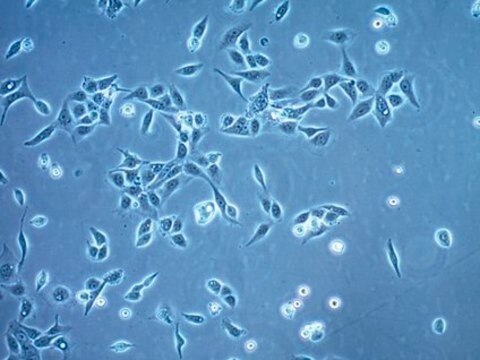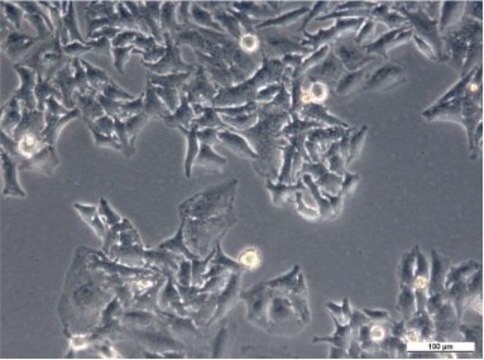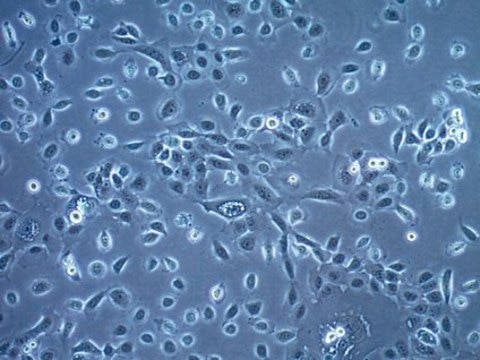A431 Cell Line human
85090402, squamous carcinoma
Synonym(e):
A-431 Cells, A431/P Cells
About This Item
Empfohlene Produkte
Biologische Quelle
human skin
Wachstumsmodus
Adherent
Karyotyp
Hypertriploid
Morphologie
Epithelial
Produkte
Not specified
Rezeptoren
Epidermal growth factor (EGF)
Methode(n)
cell culture | mammalian: suitable
Relevante Krankheit(en)
cancer
Versandbedingung
dry ice
Lagertemp.
−196°C
Verwandte Kategorien
Ursprung der Zelllinie
Beschreibung der Zelllinie
Anwendung
- to demonstrate that p38 mitogen-activated protein kinase enhances epidermal growth factor-induced apoptosis in A431 cells
- to study melanoma-specific CD44 (a tumor marker and transmembrane receptor) alternative splicing pattern in A431 cells
- to study the anti-cancer activity of antioxidant-rich Cameroonian medicinal plants
Nährmedium
Subkultur-Routine
Sonstige Hinweise
Ähnliches Produkt
Analysenzertifikate (COA)
Suchen Sie nach Analysenzertifikate (COA), indem Sie die Lot-/Chargennummer des Produkts eingeben. Lot- und Chargennummern sind auf dem Produktetikett hinter den Wörtern ‘Lot’ oder ‘Batch’ (Lot oder Charge) zu finden.
Besitzen Sie dieses Produkt bereits?
In der Dokumentenbibliothek finden Sie die Dokumentation zu den Produkten, die Sie kürzlich erworben haben.
Artikel
Application note on how the CellASIC® ONIX2 microfluidic system can be used to analyze caspase-3 mediated apoptosis/cell death and cellular hypoxia in live immune and cancer cell lines.
Unser Team von Wissenschaftlern verfügt über Erfahrung in allen Forschungsbereichen einschließlich Life Science, Materialwissenschaften, chemischer Synthese, Chromatographie, Analytik und vielen mehr..
Setzen Sie sich mit dem technischen Dienst in Verbindung.





